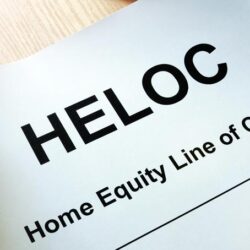About one year ago, we started exploring selling our Indianapolis portfolio. You can see the property details on all five rentals here, and our sell v. hold analysis here. In a nutshell, this was our highest cash-flowing geography (compared to Asheville, Jacksonville and Tamarindo), which is why we bought in this market. But it was also our biggest management headache – while we worked with local property managers in Indy, we went through three of them in under four years and were never fully satisfied.
Shortly after listing the portfolio for sale, we received an offer but ended up declining in favor of trying a new property management company. Why didn’t we push on with a sale at that time?
- First of all, the offer was lower than our minimum and contained a lot of contingencies.
- Secondly, we preferred to hold for a few more years. Real estate transactions are expensive – title companies, housing agencies, brokers all take their fee. Even though the properties had been cash flowing and had some appreciation, we were only two and three years into owning the portfolio, and there wasn’t enough time for appreciation to fully cover those costs.
- Finally, the reason we bought in Indianapolis in the first place was still valid – we wanted higher cash flowing properties to balance out our other properties, and we were bullish on the Midwest.
We sold the portfolio in July 2019
Fast forward a few months after we decided to hold, and it was more of the same headache, even with new property managers in place. We had canvassed three companies before deciding on this latest one, and we still had to be far more hands-on than we wanted to be (and more involved than we had to be for any other geography).
In addition, the prospect of a recession in 2020 or even 2021 brought home the fact that this geography would be the least likely to weather an economic storm. Our Indianapolis properties are in working class neighborhoods where tenants are one paycheck away from disaster. We were already having late payment issues and even had a couple of evictions in the few years we held. How much more trouble was brewing if a recession hit?
We also are looking to simplify our lives and our investments. My One Word for 2019 is “light”. Selling this portfolio represents lightening various things – the number of real estate markets we carry, the number of property managers we need to deal with, the risk in our portfolio (especially as a recession looms) and our debt burden. It also gives us a little more financial flexibility as we are paying more for college for our youngest than we anticipated. As new empty-nesters, we want to travel and explore other investments, and selling frees up over six-figures in cash.
Finally, our property manager brought us a buyer who was interested in taking all five properties in one package. The price was within our target, and the contingencies were reasonable. Since this was an experienced commercial investor, it was a straightforward negotiation.
We also considered listing on Roofstock
While we were exploring leads from our property manager, we also considered selling through Roofstock. Roofstock is an online real estate marketplace that specializes in investment properties. For the seller, Roofstock is helpful because it gives you access to buyers specifically looking for investment properties. Roofstock also gives sellers an estimate of what your properties might sell for (within a $5000-$10000 range). You input your property address and receive a report within a couple of days, sometimes sooner. Our full portfolio was estimated at over $50,000 of what we ended up selling it for.
For the buyer, Roofstock gives you access to properties nationwide with various search filters. Roofstock also inspects properties before accepting them for listing on their site, so buyers get at least one value filter. Roofstock tells sellers upfront that they may insist on repairs or other updates before listing. This was ultimately why we ended up going with our property manager’s buyer instead of Roofstock. We didn’t know how extensive Roofstock’s contingencies would be, and we already had a straightforward offer within our target range.
Our results look like a bell curve
We did very well on one property, lost money on one, and were a little more than break-even on the other three. Selling the properties cost over $22,000 in title fees, recording fees, broker fees, etc. There were also fees when we purchased. Had we held longer, there would be more rents and more appreciation to better cover those high transaction costs.
That said, we covered our transaction costs, paid off our three outstanding mortgages and had about just over $24,000 more cash than we put in four years ago.
This represents less than 4% of compound average annual growth, assuming a four-year timeframe (it was slightly less than four years but I calculate the lower return). 4% is not that much better than the 2.32% we’re currently getting on our Wealthfront cash account and with so much more headache. It’s also much less than what the US stock market returned from 2016 to 2019 (using the Dow Jones Industrial Average as a proxy, returns were 13.42% in 2016, 25.08% in 2017, negative 5.63% in 2018 and 14.88% in 2019).
We have not yet worked out with our accountant what the tax hit will be because of capital gains tax. When you sell, you have to add back the depreciation you claimed in prior years, so our taxable gain will be higher than our net proceeds.
We could have deferred that capital gains tax with a 1031 exchange, where you roll your gain from the sale of an investment property into a purchase of another investment property. There is extra paperwork with a 1031 exchange, and most importantly, there is a time limit for making that next purchase. Since we weren’t sure when our next real estate investment would be, we sold outright and will pay the taxes.
Even with below-target net results we are happy we made the investment

Of course, we’d rather be reporting a slam dunk, double-digit annual growth rate for our Indianapolis investment. Instead, our gain was in the single digits, with a lot more work on our part. Still, we are glad we made the investment:
- We took action — we went forward with a new geography and a new demographic;
- We know more about where we want to focus our real estate – higher income demographics, even if that means less cash flow in the short term;
- We put our money to work sooner than later – we invested in years where we had a lot of excess cash that otherwise might have been spent, instead of invested.
======
Luckily, we found a buyer for all five properties at once to have as quick and clean a sale as possible. Otherwise, unwinding our position in Indianapolis could have been a lot more complex. It was already plenty expensive. Real estate is not liquid. Be prepared to hold for the long term.


 We are Scott and Caroline, 50-somethings who spent the first 20+ years of our adult lives in New York City, working traditional careers and raising 2 kids. We left full-time work in our mid-40’s for location-independent, part-time consulting projects and real estate investing, in order to create a more flexible and travel-centric lifestyle.
We are Scott and Caroline, 50-somethings who spent the first 20+ years of our adult lives in New York City, working traditional careers and raising 2 kids. We left full-time work in our mid-40’s for location-independent, part-time consulting projects and real estate investing, in order to create a more flexible and travel-centric lifestyle.  Financial independence and early retirement is not something we originally focused on, but over time realized it was possible. Our free report,
Financial independence and early retirement is not something we originally focused on, but over time realized it was possible. Our free report, 







